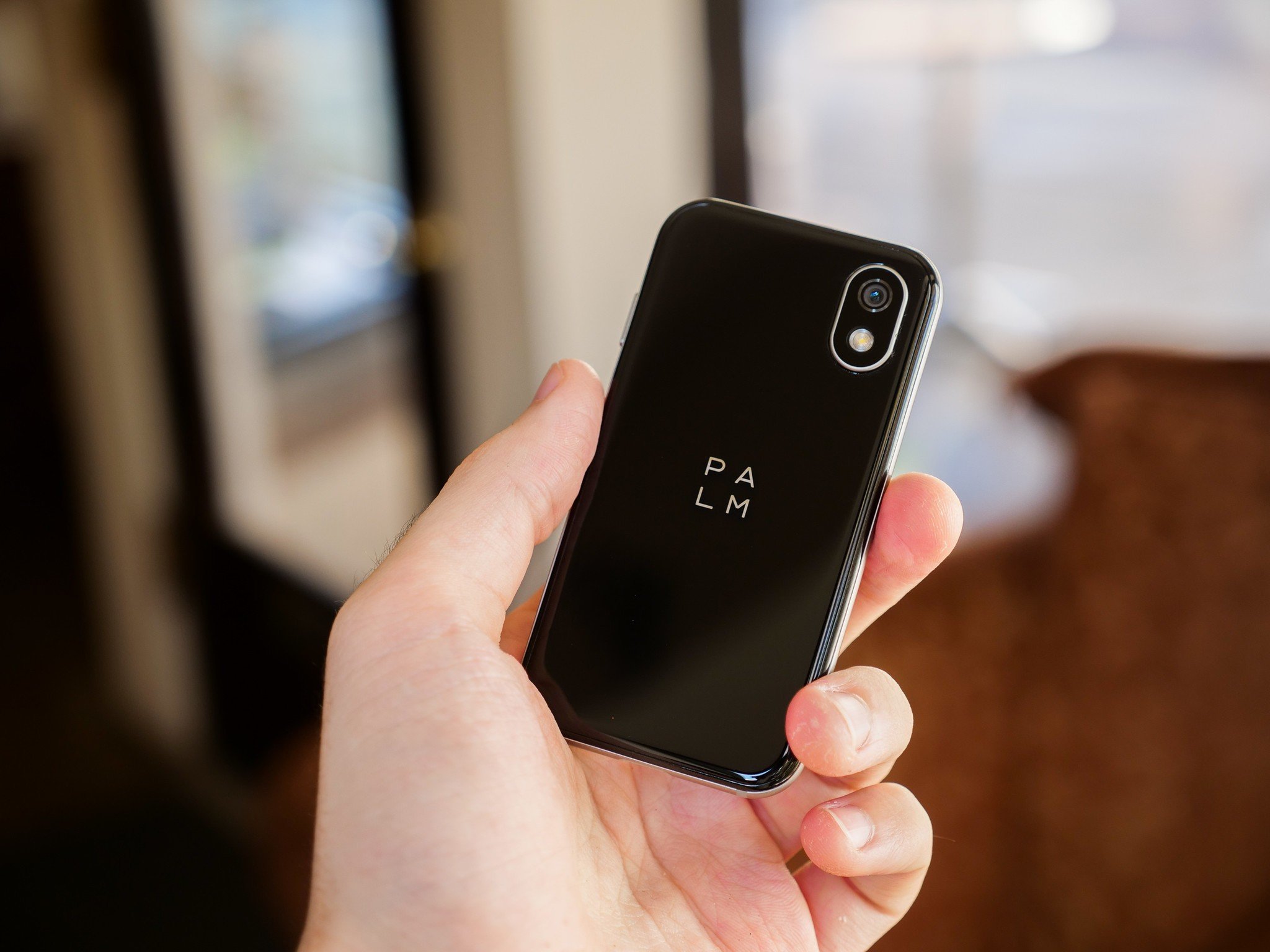Remember Palm? It was the inventive brand behind widely beloved phones from the early 2000s like the Pre, Treo, and Pixi, whose Palm OS and webOS software is still credited to this day by tech pundits and nostalgists alike for being far ahead of its time.
Whatever it is, Palm did it first and did it better.Whatever it is, Palm did it first and did it better.— Derek Kessler (@derekakessler) May 20, 2015May 20, 2015
Seven years after the release of the last mobile devices to run webOS, the Palm whose phone I'm holding today is … not the Palm we knew and loved. Palm was bought out by HP all the way back in 2010, who released a whopping three devices — including the infamous HP TouchPad — before effectively killing off the brand and eventually selling it to TCL in 2014. Yep, that's the same TCL that bought and revived the BlackBerry brand back in 2016.
All of that is to say that this isn't a "true" Palm device, and I'll say right off the bat that if that's what you were hoping for, you'll be disappointed. This isn't the Pre 4, and it shouldn't be viewed that way. Instead, this is a phone from what's ostensibly an entirely new company, and you know what? That's okay.
Pros
- Beautiful, simple design
- IP68 water-resistant
- Home screen well-optimized for small screen
Cons
- Terrible battery life
- Quick to bog down
- Poor cellular and WiFi connectivity
- Unimpressive camera
Palm Phone The Review
| Spec | Palm Phone Specs |
|---|---|
| Operating system | Android 8.1 Oreo |
| Processor | Qualcomm Snapdragon 435 processor |
| Screen | 3.3-inch 720p IPS LCD |
| RAM | 3GB |
| Storage | 32GB (expandable) |
| Rear cameras | 12MP |
| Front cameras | 8MP |
| Speaker | Earpiece |
| Water resistance | IP68 |
| Security | Face unlock |
| Battery | 800mAh |
| Colors | Titanium, Gold |
| Dimensions | 50.6 x 96.6 x 7.4mm |
| Weight | 62.5g |
I'll start by saying that this is probably the smallest device I've ever reviewed, and maybe even the smallest phone I've held. It's hard to fully take in just how tiny it is without holding it for yourself. I knew it'd be tiny, but I was still baffled when I first took it out of its box — made especially jarring because I had just come from reviewing the enormous RED Hydrogen One. It's narrower than a credit card, though it's a bit taller and, of course, thicker.
Once you get past the phone's miniature stature, you'll start to notice that it's actually a beautiful and well-crafted device, as well. The front and back of the phone are glossy black panels of Gorilla Glass 3, separated by a plastic rail in the middle that houses the microphones, antenna bands, USB-C charging port, and power button.
Get the latest news from Android Central, your trusted companion in the world of Android
Unfortunately, there's no headphone jack, and the power button is actually the only physical control on the Palm Phone; volume is handled strictly through the software. Presumably this is due to space limitations, given how small the phone is, but it's inconvenient either way. On the back, there's nothing but the camera, flash, and some slick Palm branding — no unsightly certification labels. The phone is IP68 water-resistant, as well.
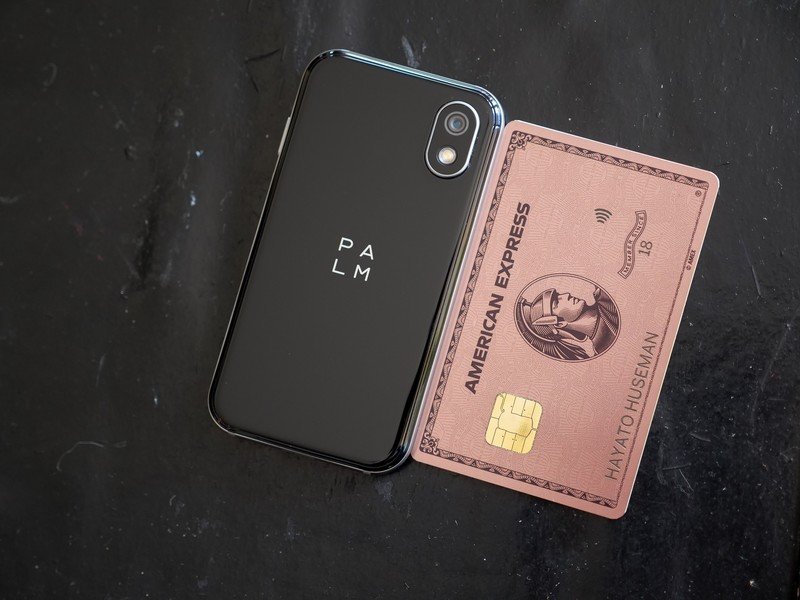
We also need to take a second to talk about the phone's branding, because its official name is kind of ambiguous. Verizon's site calls it both the Palm Palm and the Palm Device, while the phone's user manual simply calls it Palm. In my communications with Verizon PR, it's been referred to as the Palm Phone, which is what I'm sticking with for the course of this review.
"What is this, a phone for ants?!" — Derek Zoolander, probably
Regardless of what you call it, it's important to understand that the Palm Phone is meant to serve as a companion device, rather than a standalone product. Think of it as a non-wearable cellular smartwatch; it attaches to the same number as your primary phone, allowing both devices to send and receive calls and texts with the same phone number. In fact, Verizon won't even sell you the Palm Phone without an existing device.
If you've ever used Google Voice, this works in about the same way. Whenever someone dials your number, both the Palm Phone and your main phone will ring, and picking up on one device will automatically mute the other. You can sync text messages across devices too, though you'll have to use Verizon's awful Message+ app to do so. Thankfully, if you don't mind having separate records, you can always download and use Google Messages or another texting app instead.
It's worth mentioning that while the Palm Phone can technically be used in conjunction with an iPhone, iMessage won't work with number cloning, so you're going to have to revert to regular old SMS messaging. In other words, you probably shouldn't get this phone if your main phone is an iPhone.
In short, the Palm Phone is a phone for your phone; the whole idea is to intentionally limit you with a tiny display and battery to keep you off your phone as much as possible. If you find yourself spending way too much time needlessly scrolling through social media or playing mobile games, this could be a viable way to cut down on wasted time without giving up important features like maps, calls, and ride sharing.
The display on the Palm Phone is a 3.3-inch LCD panel that gets reasonably bright and has nice color reproduction. It's not overly saturated like a lot of OLED panels, and to my eyes, that's great. The 720p resolution doesn't sound like much in 2018 until you remember that it's packed into such a small display that the Palm Phone actually has a slightly denser display than the Pixel 3 I've been using alongside it — 445 ppi, to be exact.
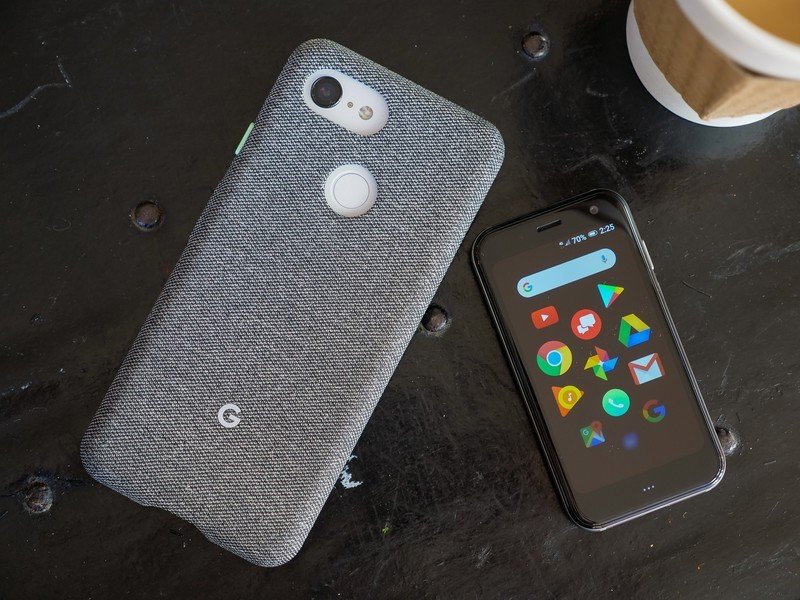
With how huge phones have gotten in the last few years, it's easy to forget how cramped having such a small display can feel, which is why Palm built its own launcher that lays out your apps into a large, circular grid that's almost reminiscent of the Apple Watch interface. Of course, you can rearrange apps as you please, but there's no app drawer, folders, or other small details here — which is probably for the better.
Launchers aside, this is a pretty lightly themed build of Android 8.1 Oreo. You can still access the Google Feed by swiping to the left of the home screen, and the included apps and settings menu are almost entirely stock. Since there's no fingerprint sensor on the Palm Phone, you can set up facial recognition for security, though it just uses the front camera rather than a more involved and secure system like Apple, Oppo, or even Samsung with its iris-scanning tech.
As far as navigation goes, there's a small series of dots beneath the display that's reminiscent of the gesture bar found on older Palm phones — though this relies on taps rather than gestures, and I didn't find the layout to be terribly intuitive. You tap once to go back, tap twice to go home, and press and hold for recent apps. It's not my favorite, but you can always revert to the traditional Android buttons at the bottom of the screen if you don't mind losing a bit of space to the navigation bar.
The Palm Phone comes with the Fleksy keyboard out of the box, which is … fine, but it doesn't support gesture typing, which I think is a must with such a small display. Installing Gboard (and choosing the maximum keyboard height) made typing a lot easier, but it still isn't what I'd call ideal; typing on a tiny touchscreen just isn't a great experience, no matter what keyboard you install.

Sadly, while having a phone that encourages you to use it less is nice in theory, the Palm Phone falls short on the basics. LTE signal strength is pretty weak, as is WiFi connectivity — my Pixel 3 performed much better in both respects, and the Palm Phone only supports WiFi 802.11n, rather than the faster ac. Calls aren't great, either; because the phone is so small, the microphone is pretty far away from your mouth and ends up picking up a lot of background noise.
For general media playback, the Palm Phone uses the earpiece as a front-firing loudspeaker, rather than a bottom-firing unit. It's surprisingly loud, but as you might expect, there's basically no bass. It's serviceable for watching videos, but it's too shrill for my ears when it comes to streaming music from Spotify.
I was pretty let down by the phone's performance, too. The Snapdragon 435 isn't a particularly high-end processor to begin with, but the Palm Phone is remarkably easy to bog down with even simple tasks; installing updates for 16 pre-installed apps after initial setup managed to bring the phone to a crawl, and it got surprisingly warm by the end of it.
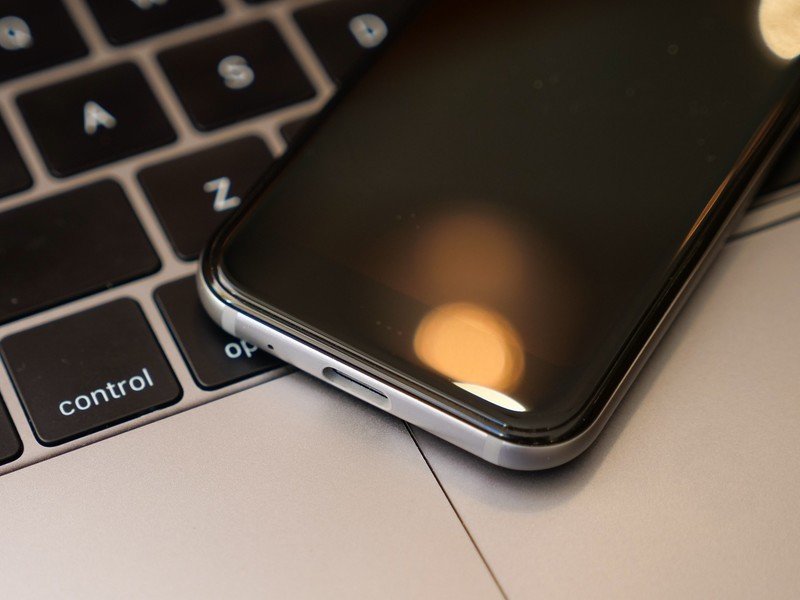
Battery life is about as good as you'd expect from an 800mAh cell — meaning it's bad. Running those app updates dropped my battery by nearly 20% in a matter of about 10 minutes, and I haven't been able to make it through a full day even once. In fairness, Palm only claims up to 7.5 hours of usage, but even that's pretty generous; I've been able to watch the battery percentage trickle down in real time just by scrolling through Twitter. This is definitely not an all-day phone, nor is it meant to be.
I like the idea of this phone a lot more than the implementation.
You can extend that battery life a bit by enabling Life Mode, which turns off cellular and WiFi connections whenever the screen is off, then automatically re-enables them when you turn the screen back on. It's not quite airplane mode, since it leaves Bluetooth on for music streaming, but it significantly improves standby time. It also means you won't get notifications until you check your phone, which could be a benefit or a disadvantage, depending on how you look at it.
Should you decide to snap some photos with the Palm Phone, its 12MP camera takes alright shots, but it's definitely not a main focus of this phone. Color reproduction is actually pretty good, but fine details are lost and dynamic range is unremarkable. Particularly in low light, highlights are blown out more often than not, and the camera is prone to lens flare.
I also found it frustrating that there's no way to quickly launch the camera, since double-pressing the power button launches Google Assistant instead of the usual camera shortcut. In most cases, you're going to be better off pulling out your main phone if you're looking to take any kind of memorable photos.

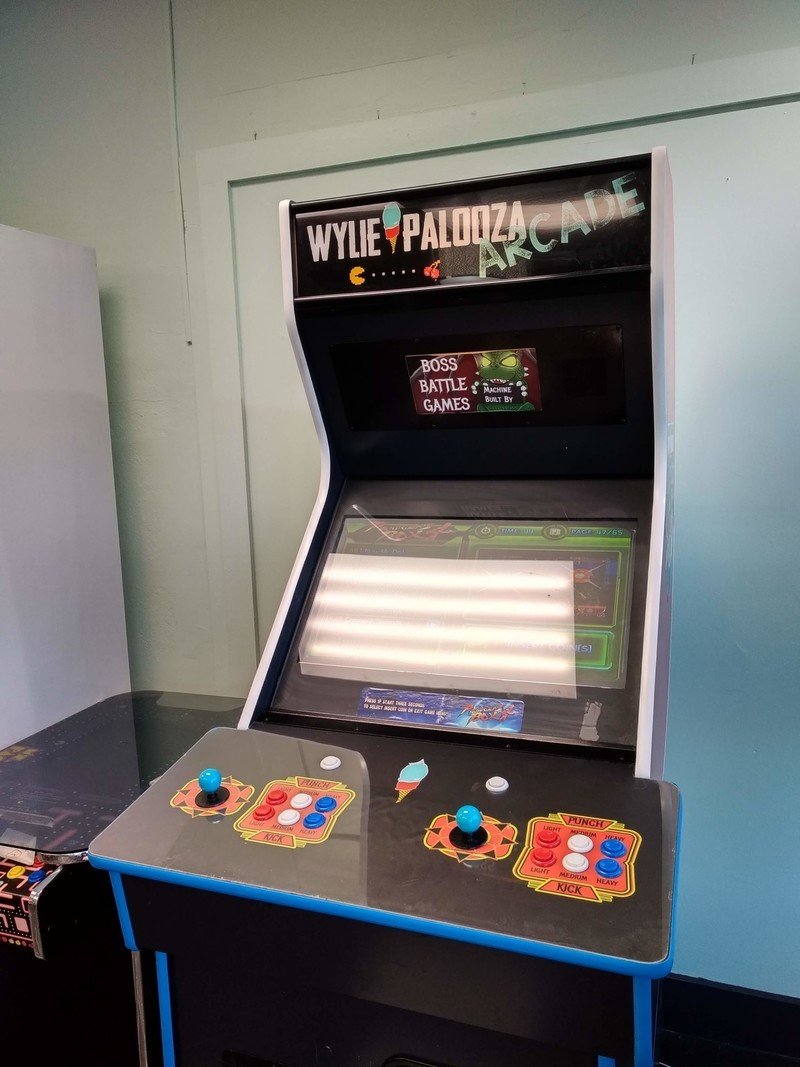




Do we really need a Palm Phone?
Ultimately, it's a bit unclear who this phone is really for. You can't use it as a standalone device, and adding it to your existing Verizon plan will add $10 to your monthly bill — all to get a phone that's specifically designed to encourage lower usage. It works exactly as advertised with NumberShare (Verizon's number cloning), but it doesn't really do anything that can't be done with a cellular smartwatch.
Sure, it has a camera, which most smartwatches don't, but it's so mediocre that I wouldn't trust it to take important photos anyway. The same goes for battery life — the Galaxy Watch can last for days at a time, while I can't even make it through the afternoon with the Palm Phone. Not to mention a smartwatch sits neatly on my wrist and can double as a fashion accessory, rather than occupying more space in my pocket.
The Palm Phone is made to help people stop using their phones so much, but is spending $350 on a supplementary phone really better than just learning some self-restraint? Let's not forget that Android 9 Pie's Digital Wellbeing features address the same concerns without the need to purchase a secondary device.
If anything, I can see the Palm Phone being convenient for workouts and quick grocery runs, when you'd be totally fine with basic communication features and don't mind leaving your more expensive phone behind. Again, it's basically filling the same role as a smartwatch, but some may prefer the smartphone form factor, and typing on a tiny phone can still be more robust than typing on an even tinier watch display.
Palm Phone Should you buy it?
If you can't tell, I'm pretty ambivalent about the Palm Phone in its current state. $350 isn't an insignificant amount for a phone that can't be used on its own, especially one that falls short on the basics of a smartphone. There just don't seem to be many reasons to buy this phone, unless you really value the novelty of its size or the somewhat disingenuous Palm branding.
2.5 out of 5
I like the idea that the Palm Phone represents; the idea of detaching from your phone every once in a while and being more in the moment, without giving up your digital life entirely. I also love that it brings Verizon into the number cloning game, because frankly it makes no sense in 2018 that most phone numbers can only be attached to one device at a time. But for now, I think your money is better spent on a smartwatch or some time management apps.

Hayato was a product reviewer and video editor for Android Central.
